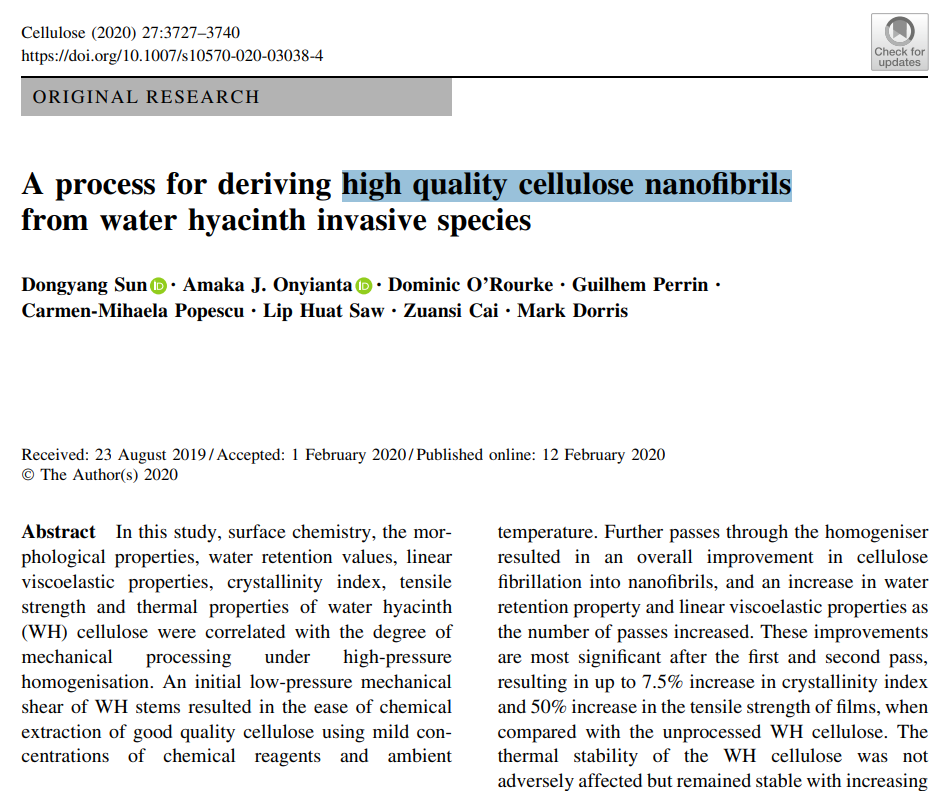Invasive aquatic plant
Water hyacinth (Eichhornia crassipes) is a large aquatic plant native to the Amazon basin. One of the fastest growing plants known; water hyacinths can double populations in two weeks. The plant is capable of reproduction by two vegetative methods: seeds and horizontal stems. Flowers open briefly during the summer before beginning to wither. When all the flowers have withered, the stalk gradually bends into the water and seeds are released and sink to the soil where they can remain viable for up to 30 years. Water hyacinth is able to grow in a wide variety of water bodies from lakes, streams, ponds, waterways, ditches, and backwater areas, although it prefers, and grows most prolifically, in nutrient-enriched waters.
Water hyacinth is considered invasive throughout the world because it grows rapidly and can form thick layers over the water. These mats shade out the other aquatic plants. Eventually these shaded plants die and decay. The decaying process depletes the amount of dissolved oxygen in the water. As oxygen levels decline, many fish are unable to survive.
Dense plant mats also interfere with boat navigation and prevent fishing, swimming, and other recreational activities. Water hyacinth may also clog intake pipes used for drinking water, hydro power, or irrigation. Because the large plants have ample surface area, lake water levels may decrease due to evapo-transpiration, when water evaporates from the lake surface and is lost through plant leaves as vapor. Globally, water hyacinth is considered a serious threat to biodiversity and human health, creating prime habitat for mosquitoes which carry a variety of infectious diseases including Eastern Equine Encephalitis Virus (“triple E”) and West Nile Virus.
Edinburgh Napier University has been working with UTAR University since 2019. They developed a conference paper on “Processing and characterisation of water hyacinth cellulose nanofibres-based aluminium-ion battery separators.” This study presents battery separators prepared from water hyacinth cellulose nanofibres (WHCNF) via a freeze-thawing crosslinking method, using polyethylene glycol as a binder.
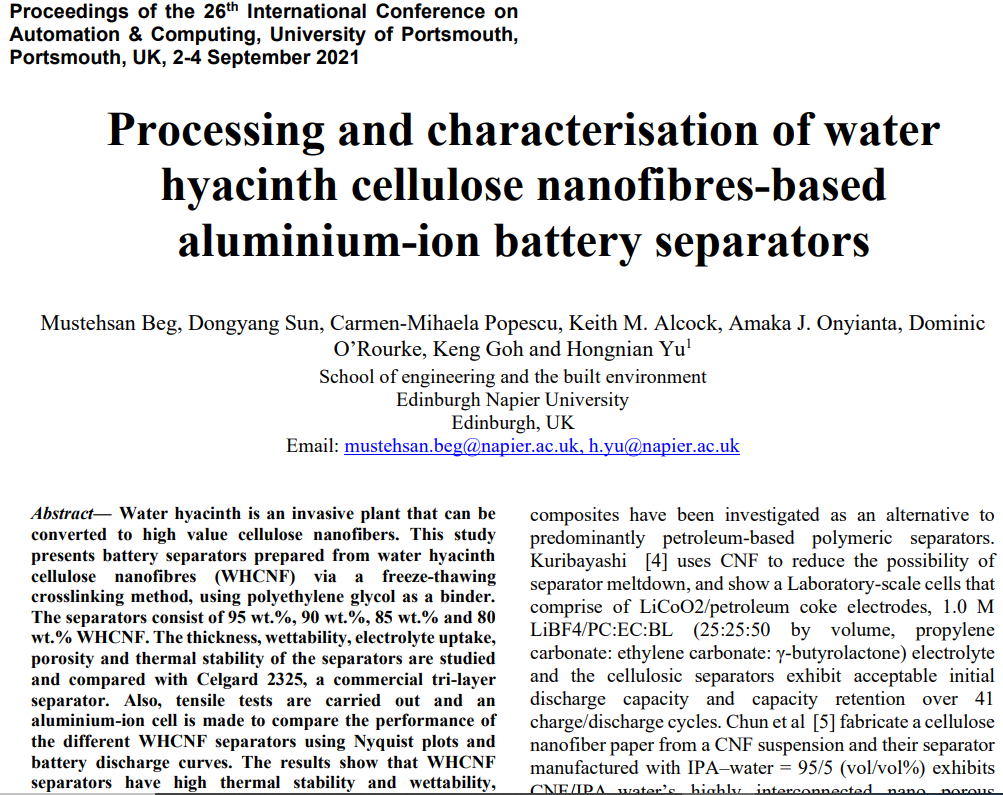
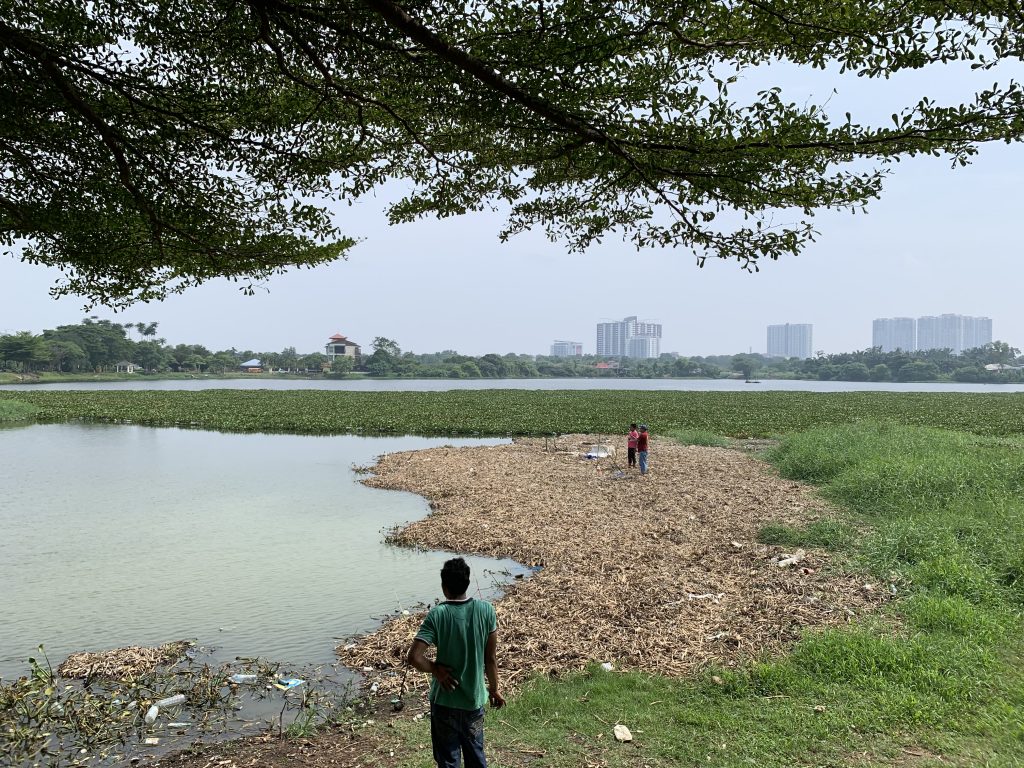
Shows where the hyacinth plants come from
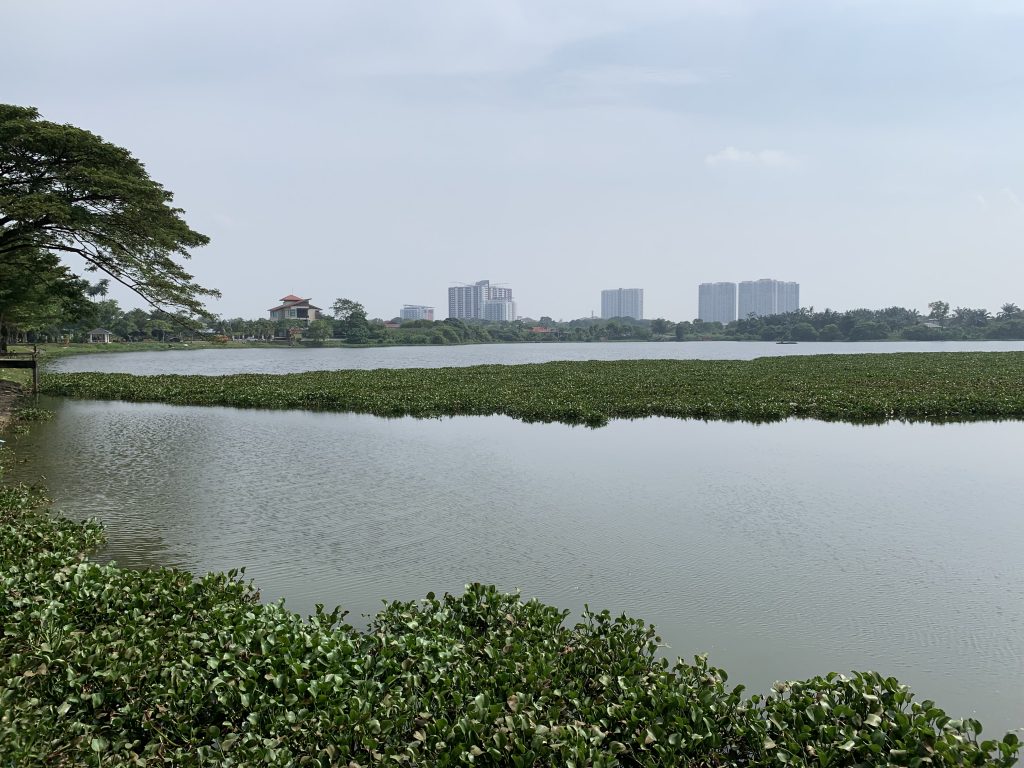
Shows the plants floating on a common lake in Malaysia
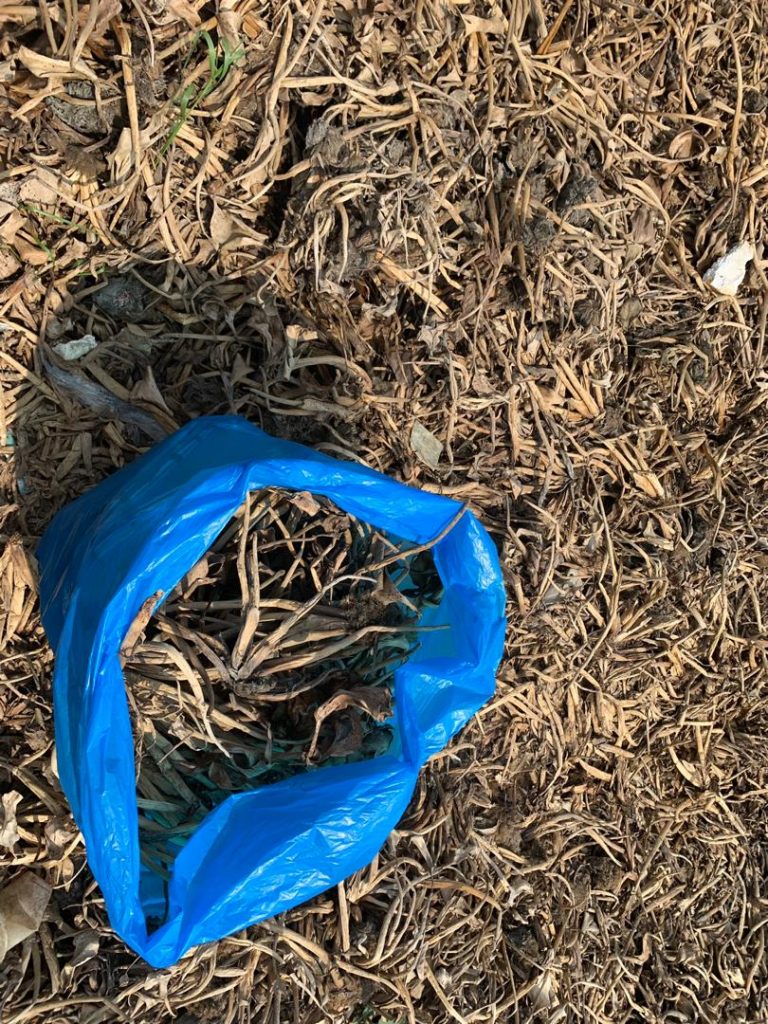
The plant being harvested from the bank
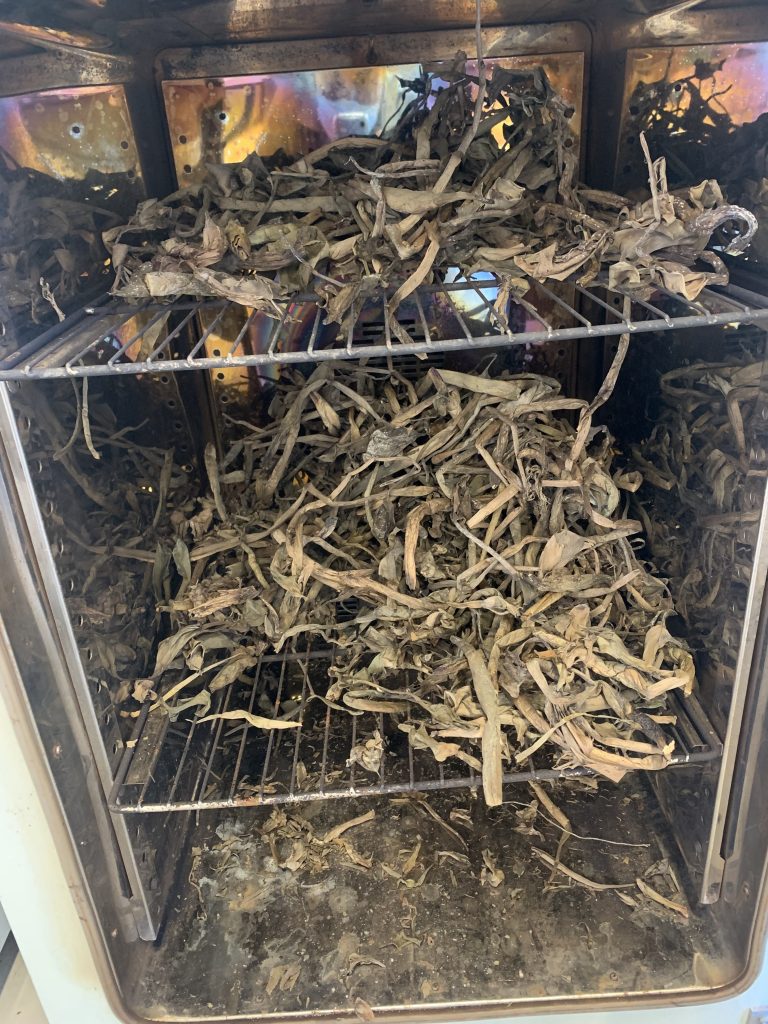
The plant is then oven-dried, chopped into smaller pieces, processed in a blender and the final dried powder is then sent to Edinburgh Napier University.
A journal paper was published on the processing technique from water hyacinth invasive species to high quality cellulose nanofibrils:
